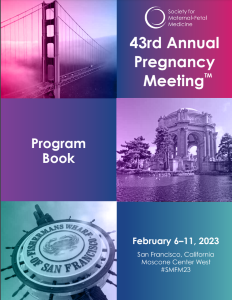Category: Clinical Obstetrics
Poster Session III
(765) Comparison of risk stratification models for prediction of transfusion following cesarean delivery
Prediction of blood product transfusion need during delivery allows preparedness and response based on patient risk. Prediction models have been developed and adopted into practice, but external validation is limited. We aimed to compare performance of three risk stratification models for transfusion in people undergoing cesarean delivery.
Study Design:
This is a secondary analysis of a multicenter randomized trial of Cesarean deliveries. The performance of three tools was evaluated – a categorical risk tool (California Maternal Quality Care Collaborative (CMQCC)) and regression models from Albright et al. and Ahmadzia et al. The outcome was red blood cell transfusion. Regression models were compared to CMQCC by transforming output into categories (low, medium, and high), matching the percentage of patients in each category by the CMQCC tool, and then comparing parameters. For the regression models, secondary analyses included calculating area under the receiver-operating curve (AUC-ROC), and the positive and negative predicted values (PPV/NPV) across a range of thresholds to consider patients at high risk for transfusion.
Results:
Of 10,785 included patients, 3.89% were transfused. The transfusion rate among 33% of patients at high risk by the CMQCC tool was 7.5% (95% CI: 6.6-8.3). The Ahmadzia model had higher sensitivity than other models when CMQCC categories were applied to the regression models, but positive and negative likelihood ratios were similar (Table). The AUC-ROC for Ahmadzia and Albright models were 0.78 (CI: 0.76, 0.81) and 0.79 (CI: 0.77, 0.82), respectively (p=0.38 for difference). Choice of high-risk threshold altered the PPV and NPV of the regression models (Figure).
Conclusion: When using low, medium, and high risk categories as defined by the CMQCC tool, all three prediction models performed similarly, with magnitudes of positive and negative LRs not indicative of meaningful change from ante to post hoc probability. Performance may be improved by considering different thresholds for defining patients as high-risk for transfusion.

Jerome J. Federspiel, MD, PhD
Duke University Hospital
Durham, North Carolina, United States

.png)

